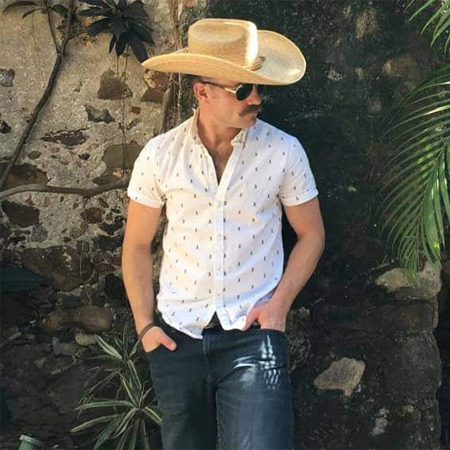Microclimates for Season Extension (5:55)
The Hotbed: A Glorified Compost to Get an Early Start on the Season
It’s exciting after a long winter to find volunteer tomatoes sprouting on the top of my steaming compost heap months before the recommended seeding date. In a warm, moist environment, with sufficient lighting, a seed cannot be restrained. Can we take advantage of the heat generated by our compost pile to get an early start on the growing season?
The hotbed I built is filled with five yards of our cows’ manure mixed evenly with fresh woodchips. On frosty mornings when I gather eggs, I’ll lift the glass lid that traps the heat and watch puffs of steam rising from the four chimneys that aerate the compost. I breathe in its earthy exhalations and place my hand on the warm, moist woodchips I’ve strewn on the surface. Here new life is pulsing.
A hotbed is a glorified thermophilic compost that also serves as a nursery. Remember, however, that the hotbed is first and foremost a compost and all the rules of thermophilic composting we discuss in the gardening course should be followed. Here is food for microbes to nourish a future generation of plants. Compost properly and take advantage of the heat it provides.

When composting is done right, our senses are blissfully aroused. Done wrong and we’re repulsed. Some gardeners online recommend that we stomp down the contents of our hotbed as it’s being filled. Bad idea. Yes, a compacted pile will still generate heat, but it’ll encourage the proliferation of disagreeable microbes producing alcohols and other undesirable gases. Keep your hotbed aerobic.
I maintain an oxygen-rich compost by adding the manure and woodchips around drainpipes that I pull out the next day. My hotbed has four perfect holes that bring oxygen to the heart of my pile. I’m confident it’ll compost properly and continue to produce heat for months to come.
By mid-February, when we exceed nine hours of daylight, our seedlings in the hotbed receive enough light, humidity and warmth to thrive. Last week I sowed my spring kale, fast-maturing green cabbage, onions, romaine lettuce, bok choy and chard. I was surprised my brassicas emerged within three days of seeding despite overnight frost.
It’s important to moderate the temperature so seedlings don’t become too stretchy. During the day I raise the lid on the hotbed to acclimatize my babies to the harsher conditions they’ll experience when planted in the garden. By early spring, the lid will remain open, and I’ll continue to successively seed until it’s warm enough to start my seedlings outside.
When balmier days return, and my hotbed is no longer needed for starting transplants, I’ll introduce red-wriggler worms to aid in the decomposition. They’ll occupy the compost and produce the finest soil amendments imaginable. Next January, I’ll remove beautiful vermicompost from my hotbed and use it to start next year’s transplants.
My hotbed gives incredible satisfaction and joy. Using a natural system, I’m able to get a head-start on the season without artificial inputs.

And all the while, my hotbed is producing nutrient-rich compost that’ll provide nutrients to feed soil microbes and crops for years to come. It’s a splendid example of stacking enterprises in our garden where one plus one equals three or even five.
Those of us who are frustrated with the wastefulness and expensiveness of modern food production can find inspiration in the simplicity of the hotbed system. It’s yet another innovative method we can use to achieve greater self-sufficiency and grow more of our own food year-round.






